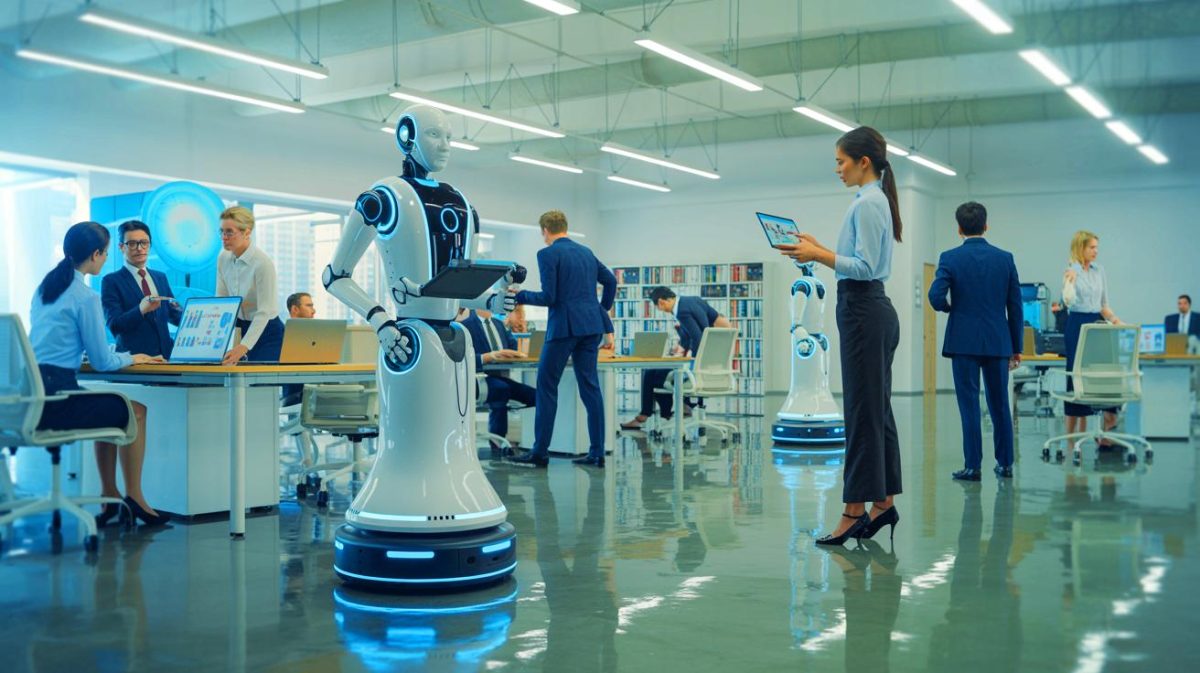| IN A NUTSHELL |
|
The rapid advancement of artificial intelligence (AI) is reshaping the global job market, bringing both opportunities and challenges. While AI promises increased productivity and lower costs, its rise has sparked significant concerns, particularly regarding its impact on gender equality in the workplace. A recent report by the United Nations’ International Labour Organization (ILO) highlights the growing risk of AI amplifying gender and racial biases, with a disproportionately negative effect on female employees compared to their male counterparts. As AI continues to evolve, understanding its implications on various demographics is crucial.
The Growing Influence of AI in the Workplace
By 2024, more than 50% of companies with over 5,000 employees had integrated AI into their operations. For many business leaders, AI represents a pathway to enhanced productivity and reduced labor costs. However, this shift towards automation raises concerns about its impact on human employees. The ILO report indicates that AI’s influence is particularly pronounced in high-income countries like the United States, where the risk of job displacement is increasingly skewed against women.
In these regions, the probability of women being replaced by AI has surged to 9.6%, a significant rise from 7.8% just two years ago. In stark contrast, the risk for men currently stands at 3.5%, up from 2.9% in 2023. This disparity underscores the urgent need to address gender-specific vulnerabilities in the face of technological advancement.
Why Women’s Jobs Are More Vulnerable
The ILO report highlights that jobs predominantly held by women in affluent countries are particularly susceptible to automation. Positions such as administrative roles, office work, and data entry, which have historically been female-dominated, are increasingly being targeted for AI-driven automation. The nature of these roles, characterized by repetitive tasks and data processing, makes them prime candidates for AI replacement.
This trend not only threatens job security for women but also exacerbates existing gender disparities in the workplace. As AI continues to evolve, it is essential to implement strategies that protect vulnerable job sectors and promote gender equality. By doing so, we can ensure that the benefits of AI are shared equitably across all demographics.
The Role of AI in Reinforcing Gender and Racial Biases
One of the most concerning aspects of AI’s rise is its potential to reinforce existing gender and racial biases. The ILO report emphasizes that AI systems, often trained on biased data, can perpetuate and even amplify these prejudices. This is particularly troubling in hiring processes, where AI algorithms may inadvertently favor certain demographics over others.
To mitigate these risks, it is crucial for organizations to develop and implement AI systems with fairness and inclusivity in mind. By prioritizing ethical AI development, companies can help prevent the entrenchment of biases and contribute to a more equitable future. Ensuring that AI technologies are transparent and accountable is key to achieving this goal.
Strategies for a Balanced AI-Driven Future
As AI continues to transform the workplace, it is imperative to adopt strategies that promote a balanced and inclusive future. Policymakers, business leaders, and technology developers must collaborate to create frameworks that protect vulnerable job sectors and ensure fair opportunities for all employees.
Investing in retraining and upskilling programs for workers in at-risk industries is a crucial step in this direction. By equipping employees with the skills needed to thrive in an AI-driven economy, we can minimize job displacement and foster a more resilient workforce. Additionally, promoting diversity in AI development teams can help create technologies that reflect the needs and values of a diverse society.
As we navigate the complexities of AI integration in the workplace, the need for equitable and inclusive practices becomes increasingly urgent. How can we ensure that the benefits of AI are shared fairly across all demographics, and what role will policymakers play in shaping this future?
Did you like it? 4.5/5 (23)







Est-ce que l’article propose des solutions pour protéger les emplois des femmes face à l’IA ?
Merci pour cet article éclairant ! Il est temps d’agir pour protéger les emplois féminins. 🙌
Je ne suis pas sûr que l’IA soit le problème principal ici. Peut-être que le vrai problème est la sous-évaluation des emplois dominés par les femmes ? 🤔
Pourquoi les métiers masculins sont-ils moins menacés par l’automatisation ?
L’IA va-t-elle vraiment remplacer autant de postes ou est-ce juste une exagération ?
C’est vraiment effrayant de penser à la rapidité avec laquelle l’IA pourrait changer le marché du travail. 😨
Est-ce qu’on pourrait utiliser l’IA pour créer de nouveaux emplois plutôt que d’en supprimer ?
Je suis sceptique quant à l’impact réel de l’IA sur les emplois féminins. Attendons de voir.